Reporting and analyzing “near misses” on a worksite is a crucial way to improve safety culture. Learning from your mistakes is great, but it’s even better when you can learn from an “almost-mistake.” Particularly in the construction trade, where a mistake can be deadly. Incident reporting can be challenging and so anything we can do to prevent that process should be desired.
A near miss can be defined as “an unplanned event which did not result in injury, illness, or damage – but had the potential to do so.” If your team can take those events and incidents, extract a lesson or two and incorporate the learning into your safety culture and practices, everyone will be better off.
But how exactly can you improve safety culture through analyzing near miss situations? Here are 6 tips.
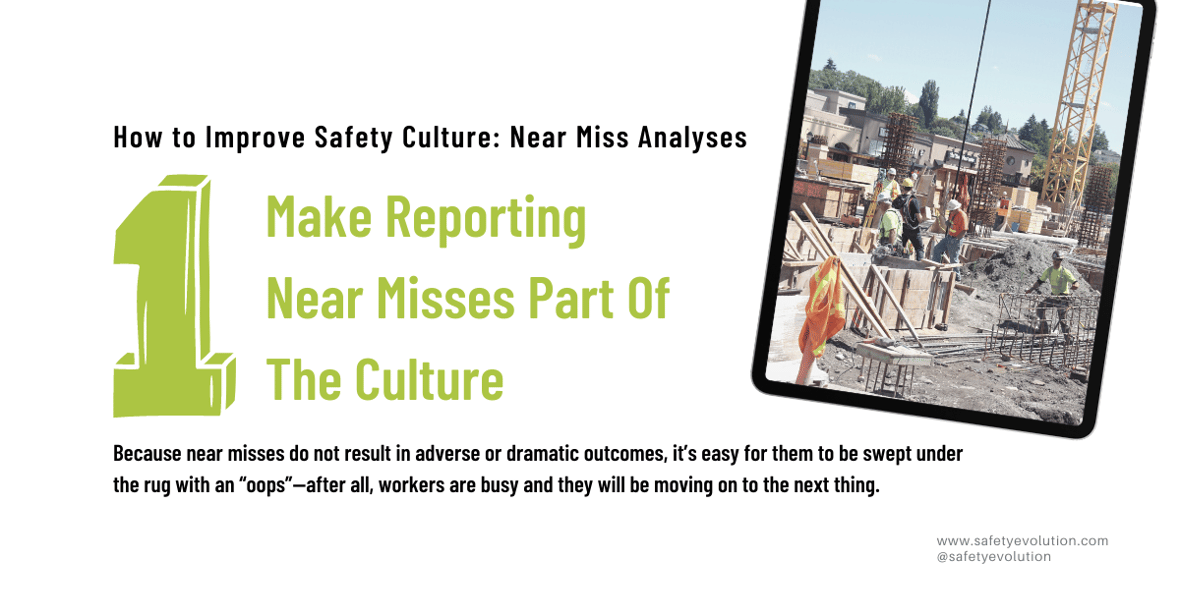
1. Make Reporting Near Misses Part Of The Culture
The site management, if not present at the time of any particular event, will not know about it unless someone tells them. And you don’t want to rely on the grapevine!
Because near misses do not result in adverse or dramatic outcomes, it’s easy for them to be swept under the rug with an “oops”—after all, workers are busy and they will be moving on to the next thing. We do it in our personal lives, too; we slip on the stairs and catch ourselves then think nothing more of it, or knock a glass off a precarious shelf and catch it, continuing about the day with just a mental note to be more careful.
However, it’s important to catch those learning opportunities, and for that to happen there needs to be a robust reporting system. First, educate your workers on what type of things should be reported—including near misses. Then, provide a clear and easy way for them to report the details to the site leadership. It should allow for anonymity if the reporter desires, and—crucially—be non-punitive.
A good safety management software like Safety Evolution is the simplest way to report and manage workplace safety data. Workers can submit digital forms from any device, eliminating the possibility of illegible paperwork and forms being lost in the shuffle. It also makes life easier for those collecting and analyzing the data, with a mission control dashboard that offers an overview of everything a manager might need to see.
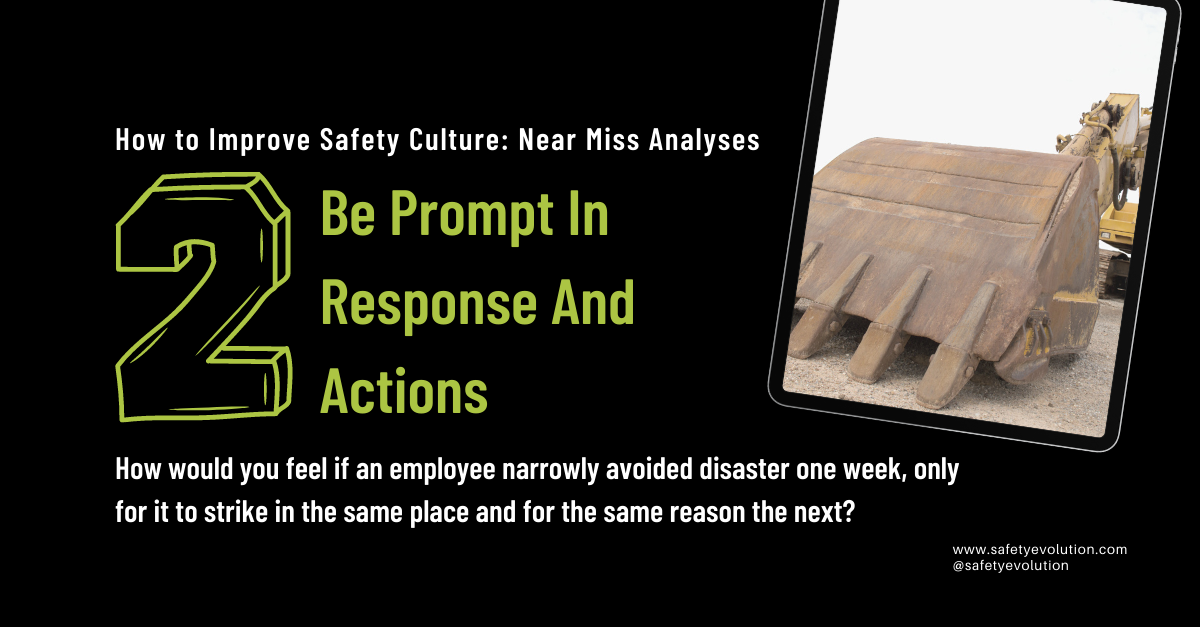
2. Be Prompt In Response And Actions
Any investigation into a near-miss event should happen quickly after it takes place. This is so that it is fresh in the mind and also to prevent the worst thing from happening next time. How would you feel if an employee narrowly avoided disaster one week, only for it to strike in the same place and for the same reason the next? A near miss exposes a weak point in safety processes, behaviors, or protocols, and they should be addressed pronto.
A prompt response to their reporting is also encouraging to employees; it shows them that their concerns are taken seriously and that making a report has a positive effect. It indicates an effort to improve on the part of management.
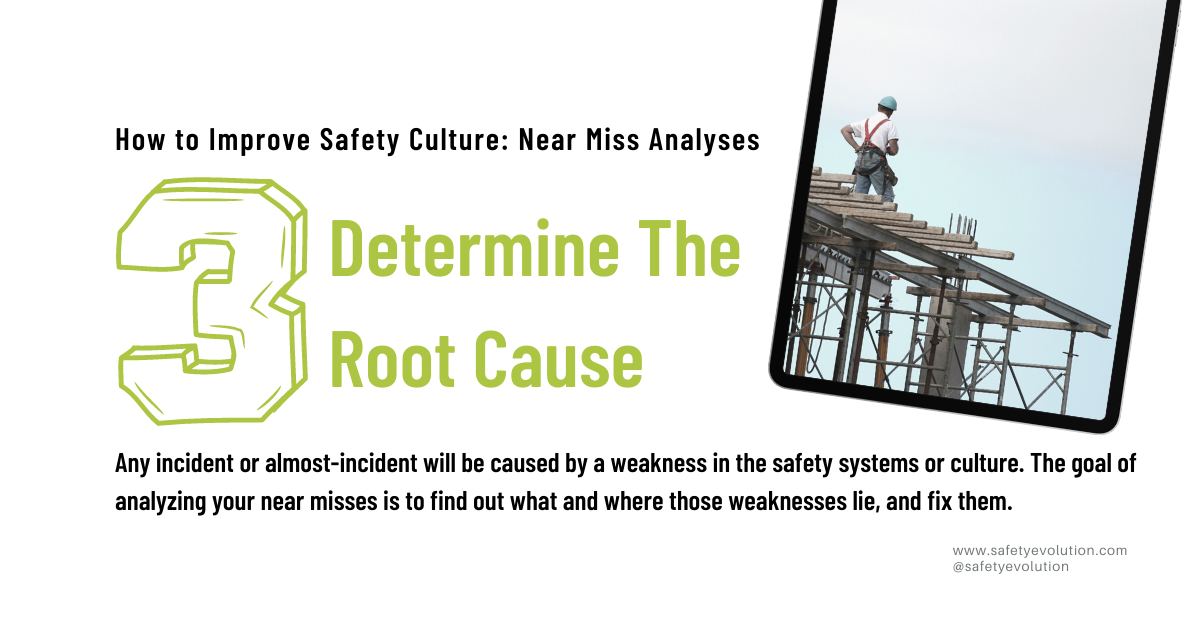
3. Determine The Root Cause
Any incident or almost-incident will be caused by a weakness in the safety systems or culture. The goal of analyzing your near misses is to find out what and where those weaknesses lie, and fix them. The same principle, of course, applies when an accident does happen.
Once you have collected all of the information you can regarding an event, it’s time for those in charge to analyze. Different teams will use different methods of assessing the root cause of a near miss, but the following tools can be helpful:
- Brainstorming
- Logic/event trees
- Timelines
- Key questions: What happened (or nearly happened), why did it (nearly) happen, would it happen again?
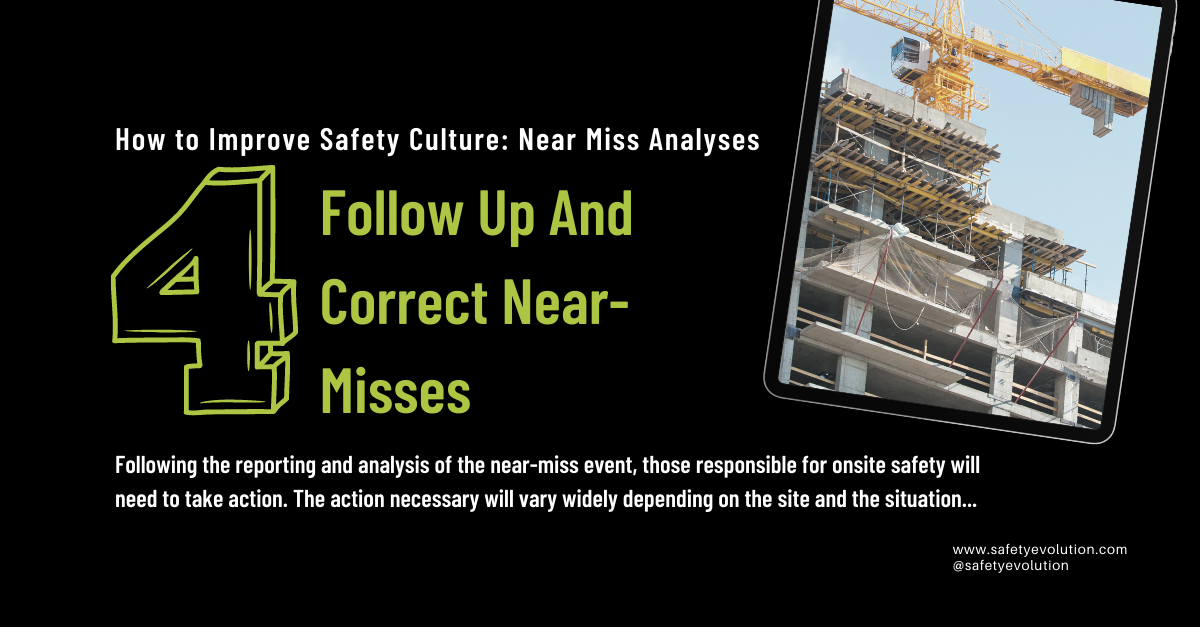
4. Follow Up And Correct Near-Misses
Following the reporting and analysis of the near-miss event, those responsible for onsite safety will need to take action. The action necessary will vary widely depending on the site and the situation; it should become evident once an analysis has been completed.
If something had fallen off a top shelf, for example, and nearly hit a worker on the head, the corrective action may be to change storage systems to put lighter or more stable objects on the high shelves or to change the rules and require hard hats be worn in the storage area. A near miss involving a power tool might prompt better training for employees tasked with using that particular tool.
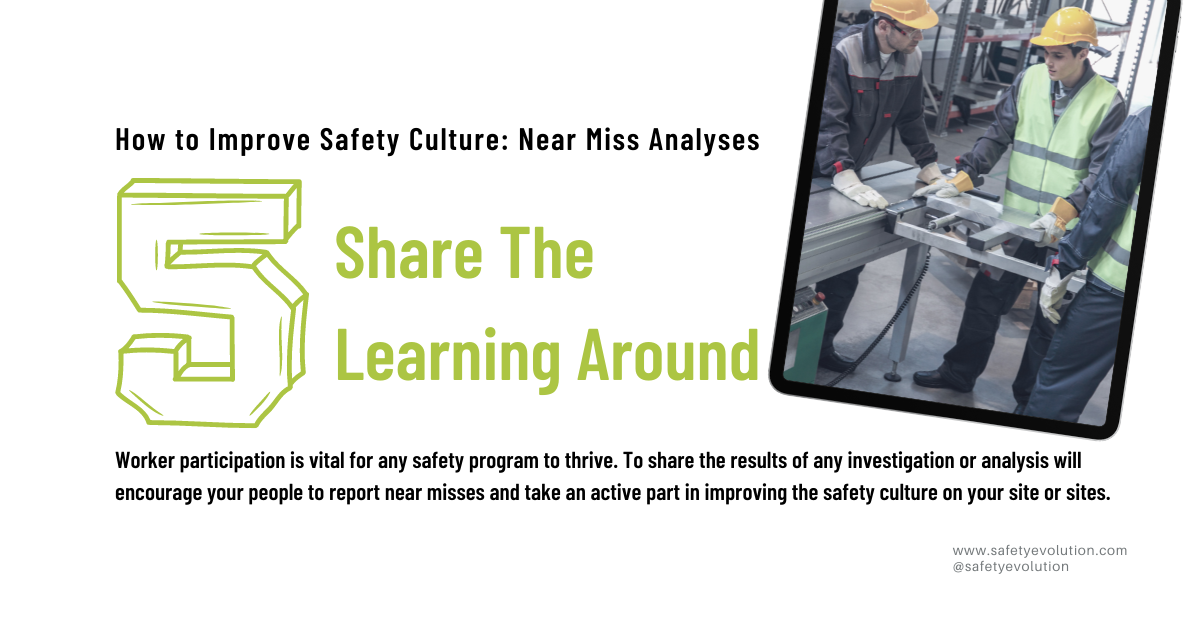
5. Share The Learning Around
When implementing a rule change or new way of doing things, always make the reasons for doing so clear—this makes employees more willing and likely to embrace the changes. Lessons learned are not just for management, but for everyone. Do keep in mind, however, that some reports were made anonymously and they should stay that way when you are discussing the contents of them.
Worker participation is vital for any safety program to thrive. To share the results of any investigation or analysis will encourage your people to report near misses and take an active part in improving the safety culture on your site or sites.
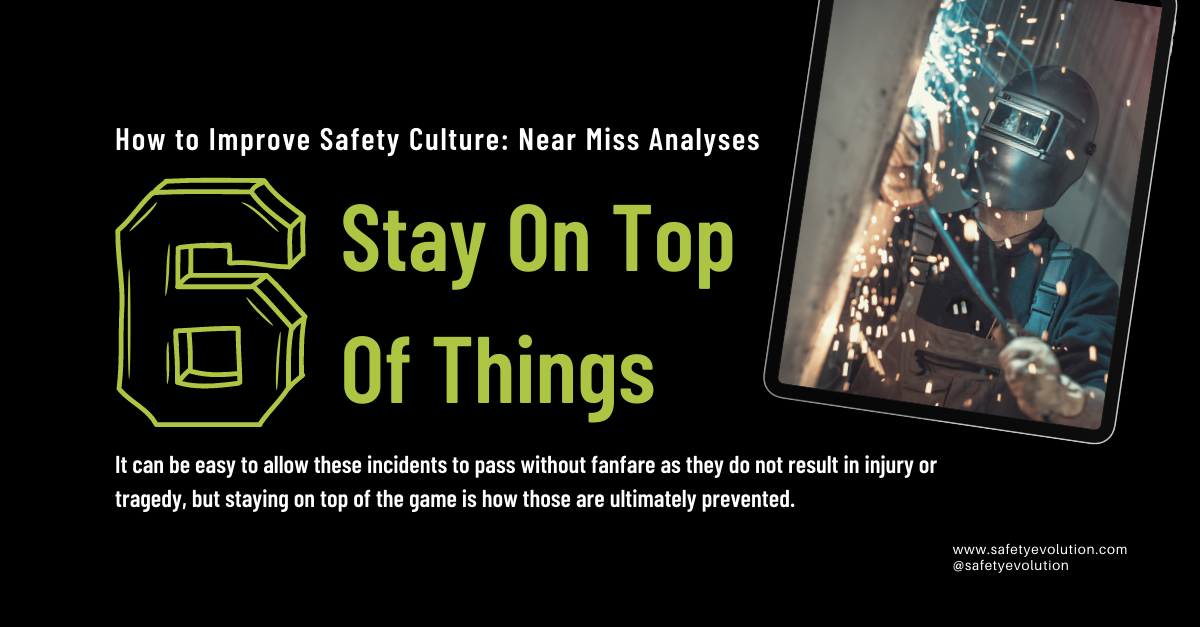
6. Stay On Top Of Things
Near-miss tracking and analysis have shown great improvements to safety outcomes in the aviation industry, among others. It can be easy to allow these incidents to pass without fanfare as they do not result in injury or tragedy, but staying on top of the game is how those are ultimately prevented.
Near misses are a valuable learning experience, and to make the most of what they can teach, several things must be in place. They include a good, non-punitive reporting system, prompt and thorough analyses of the event, and corrective actions that will prevent the near miss—or a worse accident—from happening again.
We recommend using a comprehensive safety management software to improve safety culture in your company and keep track of onsite reporting, filing, training, checklists and more.
Get Your Free Near Miss Report Template and Investigation Guide to start improving your safety culture now!

Sign up to receive our weekly newsletter with helpful safety content below!